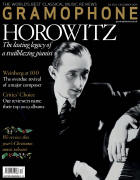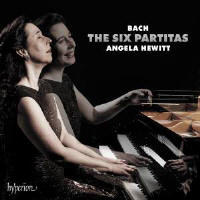Texte paru dans: / Appeared in: |
|
|
Outil de traduction (Très approximatif) |
|
|
Reviewer:
Jed Distler Critics and piano mavens will likely evaluate Angela Hewitt’s new 2018 recording of the Bach Partitas alongside her 1996/97 version. The most noticeable difference concerns the piano itself. The earlier recording’s Steinway possesses a uniform beauty and warmth that contrasts with the somewhat brighter tone and more pronounced timbral distinctions between registers characterising the pianist’s own Fazioli. While Hewitt’s stylish integrity, superb finger independence and deep feeling for the music’s roots in dance remains a constant, there’s now a greater level of interplay between hands, with added variety of articulation and rhythmic flexibility. Compare both Partita No 3 recordings back to back, and you’ll immediately notice this. One also perceives more expressive gestures by way of dynamic hairpins, caesuras, breath pauses and myriad accentuations that will strike listeners as either spontaneous or self-aware, depending on personal taste. I find Partita No 1’s faster movements more vibrantly delineated and shapely than before, while the Sarabande has gained welcome breadth and introspection. No question that the new Partita No 2’s outer movements hold a decisive dramatic edge over their earlier, relatively studio-bound counterparts. Its Rondeaux remains unusually deliberate, but I prefer the 1996 reading’s simpler inflections. In the introduction to Partita No 4’s Ouverture, Hewitt now tempers the rocket-like crescendos she once favoured in the upward scales but the added woodwind-like definition to the fugal section’s staccato phrasing compensates: here is where the Fazioli’s responsiveness comes into its own. If Hewitt’s earlier Allemande evoked a gentle lute solo, the new version unfolds like a vocalise. Conversely, she enlivens the little Aria with playful left-hand jabs and thrusts. To my ears, Hewitt overthinks No 5’s Praeambulum, sectionalising its contrasts, whereas the earlier traversal conveys a more natural flow. Yet her slower Allemande remake boasts a steadier overall pulse and heightened projection of the imitative writing. Her added intensity in the Corrente and Minuetta, again, may account for the immediacy of the Fazioli’s note attacks, in contrast to the Steinway’s rounder patina. The pianist, however, clearly makes the difference via her more specified handling of the arpeggios in Partita No 6’s first-movement introduction and altogether darker fugue. She now keeps the Air on a tight, austere leash and digs deeper into the Sarabande’s dissonances while bringing the bass line to the fore. And her deliberation in the final Gigue conveys palpable harmonic this time around. As with her Well-Tempered Clavier and Goldberg Variations remakes (6/09, 11/16), Angela Hewitt’s Bach Partitas have not so much changed as evolved. |
|




